


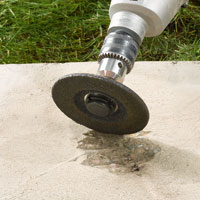
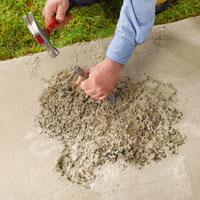 Proper surface preparation is critical to achieve a successful concrete repair. A solid, clean surface is necessary so that the
repair material can permanently bond to the damaged area. Depending on the condition and size of the repair area, various techniques can be used to improve the likelihood of a successful repair.
Proper surface preparation is critical to achieve a successful concrete repair. A solid, clean surface is necessary so that the
repair material can permanently bond to the damaged area. Depending on the condition and size of the repair area, various techniques can be used to improve the likelihood of a successful repair.
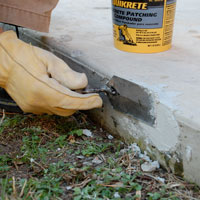
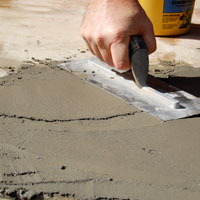 QUIKRETE® concrete repair products are designed and formulated for specific repair applications. Understanding the repair conditions and choosing the correct product for the job are essential for a long-lasting repair.
QUIKRETE® concrete repair products are designed and formulated for specific repair applications. Understanding the repair conditions and choosing the correct product for the job are essential for a long-lasting repair.
For thin repairs to small area with a chipped or damaged surface QUIKRETE® Vinyl Concrete Patcher should be used. Vinyl Concrete Patcher is enhanced with special exterior grade polymer resin that has strong bonding properties. The material can be applied to from ¼ down to a “feather-edge”. QUIKRETE® Concrete Patching Compound is another option for small non-structural repairs. The pre-mixed acrylic material dries to a firm yet flexible finish.
For repairs to concrete edges and corners QUIKRETE® Quick-Setting Cement should be used along with QUIKRETE® Acrylic Fortifier. Quick-Setting Cement can be molded and shaped to match the surrounding contour of the concrete and sets in about 10 minutes. Acrylic Fortifier provides the bond strength necessary for a long-lasting repair.
The proper water ratio and mixing procedures are important factors in achieving a successful repair. The more water that is added during the mixing process, the weaker the bond strength and compressive strength will be.
The mixing water should be accurately measured and placed in the mixing container before the repair material is added. For small repairs, mixing can be done by hand with a margin trowel or small brick trowel. The repair material should be mixed for 3-5 minutes until a lump-free consistency is achieved.
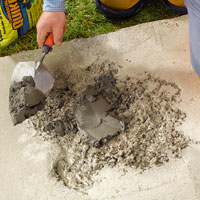 Prior to applying the repair material the repair area should be dampened with water. Enough water should be used to saturate the concrete substrate and any
standing water must be removed. This step is necessary because concrete is
essentially a rigid sponge. Dry concrete will absorb water from the repair material
and can cause a weakened bond and shrinkage cracking.
Prior to applying the repair material the repair area should be dampened with water. Enough water should be used to saturate the concrete substrate and any
standing water must be removed. This step is necessary because concrete is
essentially a rigid sponge. Dry concrete will absorb water from the repair material
and can cause a weakened bond and shrinkage cracking.
The repair material should be built up in layers with the first layer being pressed into the repair area with firm trowel pressure.
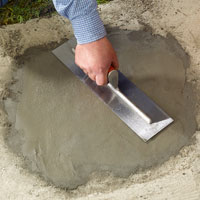
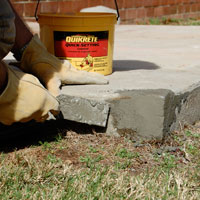 Using a margin trowel or finishing trowel, smooth the surface of the patch so that it is level with the surrounding concrete.
Quick-Setting Cement can be trimmed with the edge of a trowel and finished smooth. Avoid adding water to the surface of the
patch. The additional water can cause surface color inconsistencies, a weakened surface and shrinkage cracks.
Using a margin trowel or finishing trowel, smooth the surface of the patch so that it is level with the surrounding concrete.
Quick-Setting Cement can be trimmed with the edge of a trowel and finished smooth. Avoid adding water to the surface of the
patch. The additional water can cause surface color inconsistencies, a weakened surface and shrinkage cracks.
A masonry brush can be used to recreate a non-slip broom finish typically found on exterior concrete surfaces. The repair should be protected from foot traffic for 24 hours.